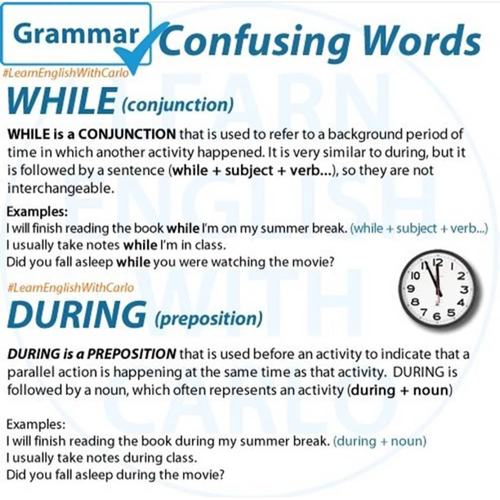As an English learner, you may have noticed that both “while” and “during” are used to talk about time. However, they are used differently in sentences, and understanding how to use them correctly can make your English more accurate and natural. Let’s break down the key differences between these two words.

1. “WHILE”
Usage:
“While” is a conjunction that connects two actions happening at the same time. It introduces a clause (a part of a sentence that has a subject and a verb).
Structure:
- While + subject + verb
Examples:
- I listened to music while I was studying.
(Here, “I was studying” is the action that happens at the same time as “I listened to music.”) - She cooked dinner while he set the table.
(Here, two actions happen at the same time: “She cooked dinner” and “he set the table.”)
Note:
“While” is often used with continuous tenses (like “was studying” or “was cooking”) because these tenses express ongoing actions.
2. “DURING”
Usage:
“During” is a preposition that is used to indicate when something happens. It refers to a specific period of time or an event.
Structure:
- During + noun (period of time/event)
Examples:
- I took notes during the lecture.
(“The lecture” is the event that took place, and “I took notes” is what happened at that time.) - She stayed quiet during the movie.
(“The movie” is the event, and “She stayed quiet” is what happened at that time.)
Note:
“During” is not followed by a clause (a subject and a verb). Instead, it is followed by a noun or a noun phrase.
3. Quick Tips to Remember
Use “during” to refer to a specific period or event when something happens.
Use “while” when you want to talk about two actions happening at the same time.
